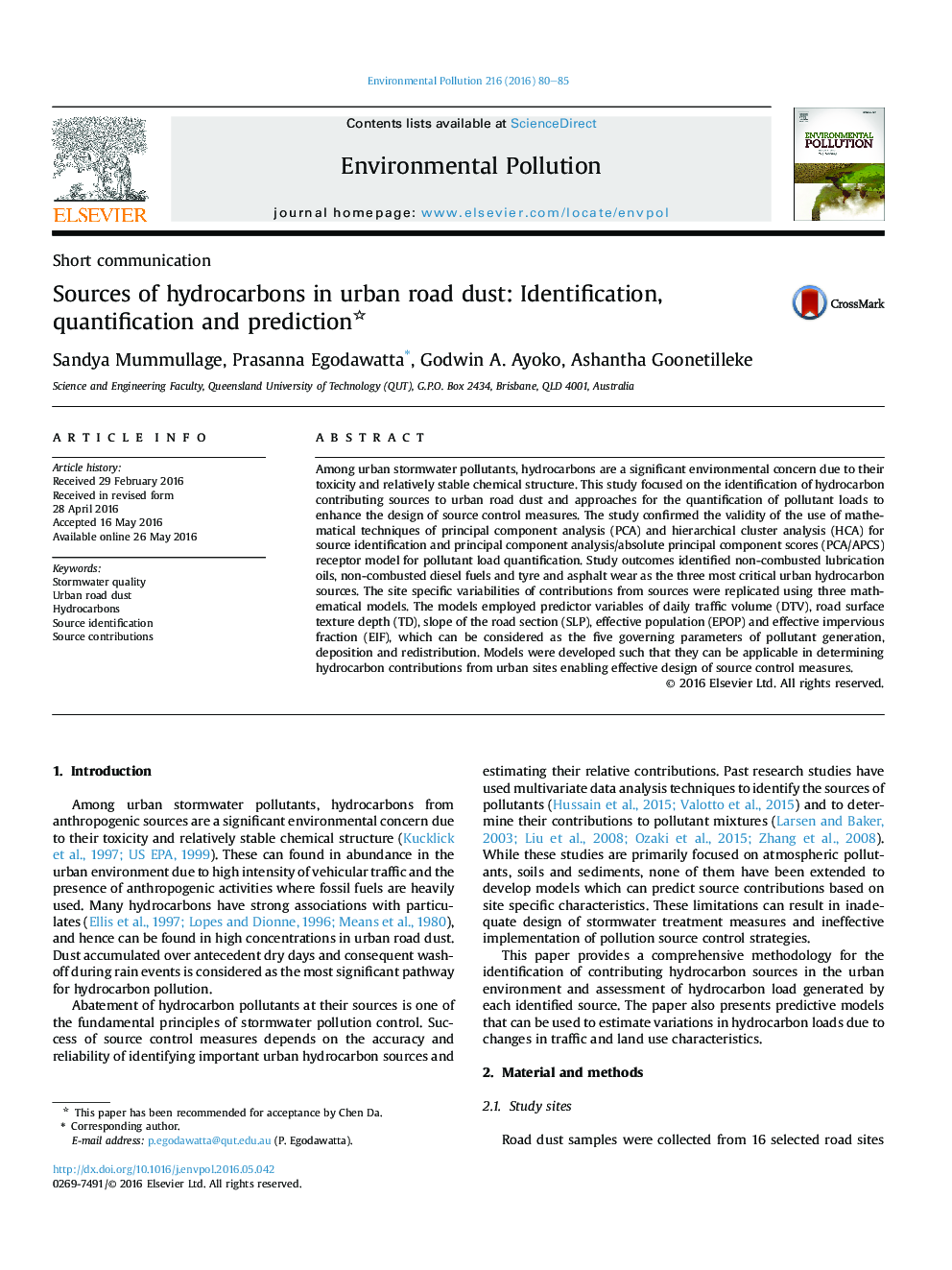| کد مقاله | کد نشریه | سال انتشار | مقاله انگلیسی | نسخه تمام متن |
|---|---|---|---|---|
| 6315778 | 1619157 | 2016 | 6 صفحه PDF | دانلود رایگان |
- Non-combusted oil and diesel, tyre and asphalt wear are the most critical sources.
- Contributions vary with averages of 26%, 62% and 12% respectively for three sources.
- Relative contributions of sources can be predicted using five governing parameters.
Among urban stormwater pollutants, hydrocarbons are a significant environmental concern due to their toxicity and relatively stable chemical structure. This study focused on the identification of hydrocarbon contributing sources to urban road dust and approaches for the quantification of pollutant loads to enhance the design of source control measures. The study confirmed the validity of the use of mathematical techniques of principal component analysis (PCA) and hierarchical cluster analysis (HCA) for source identification and principal component analysis/absolute principal component scores (PCA/APCS) receptor model for pollutant load quantification. Study outcomes identified non-combusted lubrication oils, non-combusted diesel fuels and tyre and asphalt wear as the three most critical urban hydrocarbon sources. The site specific variabilities of contributions from sources were replicated using three mathematical models. The models employed predictor variables of daily traffic volume (DTV), road surface texture depth (TD), slope of the road section (SLP), effective population (EPOP) and effective impervious fraction (EIF), which can be considered as the five governing parameters of pollutant generation, deposition and redistribution. Models were developed such that they can be applicable in determining hydrocarbon contributions from urban sites enabling effective design of source control measures.
Urban hydrocarbon pollutants are generated by three major sources with significant site specific variability.146
Journal: Environmental Pollution - Volume 216, September 2016, Pages 80-85
